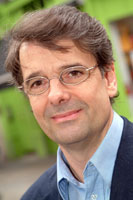As the lead author of the recent articles on coral disease outbreaks on the GBR and Indo-Pacific reef decline, Dr John Bruno raises some valid points regarding the recent critique on the decline of GBR corals by Peter Ridd:
Ove, thanks for posting Peter Ridd’s critique of Pandolfi et al. 2003. I’d be interested in hearing from Peter about whether he had a hard time getting this published and what type of reaction he got from reviewers at journals like Science or Coral Reefs. Although I agreed with some of his specific criticisms of the methodology used by Pandolfi et al., Peter’s overall arguments about the status of the GBR are demonstrably incorrect. Below I briefly comment on some his main problems (in caps) and points (in quotes) and correct some of his major errors about the state of reef-building corals on the GBR. PROBLEM 1: EFFECT OF WEIGHTING OF THE GUILDS
“The problem with equal weighting of the guilds is that the fundamental importance of corals to coral reef ecosystems is not adequately recognized.”I totally agree. This seems like a major flaw. But I imagine that the authors would respond that their intent was to quantify the status of entire reef ecosystems, including food web structure and trophic dynamics. I certainly agree that a reef without large vertebrates is aesthetically and ecologically impoverished. But it is hard to ignore the fact that without corals you have no ecosystem but without top predators you just have an altered and possibly “degraded” ecosystem.As Peter (sorry for the informality, but the Dr. Ridd said, Dr. Bruno replied thing feels a bit stuffy to me in a blog discussion) succinctly states, “coral reefs cannot exist without reef-building corals.” A seemingly obvious point that is sometimes lost.“Because the guilds and species that are subject to human exploitation (e.g. large herbivores) are often in worse state than corals”
As I discuss below, this is not the case due to the indirect and often long distance effects of humans on corals.





 Freeman Dyson: My first heresy says that all the fuss about global warming is grossly exaggerated. Here I am opposing the holy brotherhood of climate model experts and the crowd of deluded citizens who believe the numbers predicted by the computer models. Of course, they say, I have no degree in meteorology and I am therefore not qualified to speak. But I have studied the climate models and I know what they can do. The models solve the equations of fluid dynamics, and they do a very good job of describing the fluid motions of the atmosphere and the oceans. They do a very poor job of describing the clouds, the dust, the chemistry and the biology of fields and farms and forests. They do not begin to describe the real world that we live in. The real world is muddy and messy and full of things that we do not yet understand. It is much easier for a scientist to sit in an air-conditioned building and run computer models, than to put on winter clothes and measure what is really happening outside in the swamps and the clouds. That is why the climate model experts end up believing their own models. (
Freeman Dyson: My first heresy says that all the fuss about global warming is grossly exaggerated. Here I am opposing the holy brotherhood of climate model experts and the crowd of deluded citizens who believe the numbers predicted by the computer models. Of course, they say, I have no degree in meteorology and I am therefore not qualified to speak. But I have studied the climate models and I know what they can do. The models solve the equations of fluid dynamics, and they do a very good job of describing the fluid motions of the atmosphere and the oceans. They do a very poor job of describing the clouds, the dust, the chemistry and the biology of fields and farms and forests. They do not begin to describe the real world that we live in. The real world is muddy and messy and full of things that we do not yet understand. It is much easier for a scientist to sit in an air-conditioned building and run computer models, than to put on winter clothes and measure what is really happening outside in the swamps and the clouds. That is why the climate model experts end up believing their own models. ( Alun Anderson: Knowing that Arctic climate models are imperfect, it would be reassuring for me, if not for the scientists, to be able to write that scientists keep making grim predictions that just that don’t come true. If that were so, we could follow Dyson’s line that the models aren’t so good and "the fuss is exaggerated". Scarily, the truth is the other way around. The ice is melting faster than the grimmest of the scientist’s predictions, and the predictions keep getting grimmer. Now we are talking about an Arctic free of ice in summer by 2040. That’s a lot of melting given that, in the long, dark winter the ice covers an area greater than that of the entire United States. (
Alun Anderson: Knowing that Arctic climate models are imperfect, it would be reassuring for me, if not for the scientists, to be able to write that scientists keep making grim predictions that just that don’t come true. If that were so, we could follow Dyson’s line that the models aren’t so good and "the fuss is exaggerated". Scarily, the truth is the other way around. The ice is melting faster than the grimmest of the scientist’s predictions, and the predictions keep getting grimmer. Now we are talking about an Arctic free of ice in summer by 2040. That’s a lot of melting given that, in the long, dark winter the ice covers an area greater than that of the entire United States. (